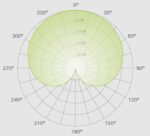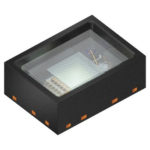Microphone polar patterns, sometimes called pickup patterns, define microphone sensitivity in different directions. The different polar patterns are used for controlling sound pickup and isolating the sound source, or sources, of primary interest from surrounding sources. There are six common microphone polar patterns: cardioid, supercardioid, hypercardioid, omnidirectional, lobar, and bidirectional. Polar patterns are represented by […]
AR/VR
How are terahertz connectors different?
Terahertz (THz) systems represent one of the next frontiers in electronics. THz applications are expected to include automotive advanced driver assistance systems (ADAS) for autonomous vehicles, next-generation telephony like 5G and 6G, augmented and virtual reality (AR & VR) technologies for the metaverse, and more. There will be numerous challenges to overcome in the development […]
Single microLED diode provides all colors, eliminates need for RGB sub-pixels
A single microLED diode handles all colors in displays, moving away from the constraints of the RGB (red-green-blue) sub-pixel model that underpins all current commercial display technologies. Porotech’s innovation lies in its game-changing DynamicPixelTuning (DPT) technology. By using a new class of Gallium Nitride materials, DPT enables a single microLED chip to produce any visible […]
What sensors are used in AR/VR systems?
A wide range of sensor technologies is required to support augmented reality and virtual reality (AR/VR) systems. Today’s AR/VR implementations are mostly focused on visual and audio interfaces and rely on motion tracking and listening/voice recognition sensors. That’s beginning to change with new types of sensors and various types of haptics being introduced. This FAQ […]
Human-like skin sensor detects objects for robotics apps
BeBop Sensors, Inc. announced the BeBop Sensors RoboSkin line of skin-like coverings for tactile awareness for humanoid robots and prosthetics. A true nervous system for robots at less than 1mm thick, RoboSkin is the only technology that fits all robotic body parts: limbs, fingers, feet, head, and torso, to make robots “feel” better. RoboSkin’s advanced fabric-based sensor skin […]
ToF sensor maps 3D surfaces
STMicroelectronics has announced a new family of high-resolution Time-of-Flight sensors that bring advanced 3D depth imaging to smartphones and other devices. The 3D family debuts with the VD55H1. This sensor maps three-dimensional surfaces by measuring the distance to over half a million points. Objects can be detected up to five meters from the sensor, and even further […]
Step-down buck converter reduces space in multi-cell battery apps
Analog Devices, Inc. introduced the MAX77540 step-down buck converter, which provides single-stage power conversion in multi-cell battery applications, such as augmented reality/virtual reality (ARVR) headsets, land mobile radios (LMRs), and digital single-lens reflex (DSLR) cameras. The power-dense MAX77540 buck converter features 94 percent peak efficiency and wafer-level packaging that measures 61 percent smaller than traditional […]
Battery management IC improves charge and fuel gauge accuracy
Analog Devices, Inc. announced the MAX17330 battery management integrated circuit (IC) with integrated fuel gauge and advanced battery protection for one-cell lithium-ion/polymer batteries that delivers a longer battery runtime for consumer applications than similar products. The new IC expands ADI’s battery management portfolio, which already delivers accuracy for the automotive and industrial markets that are […]
Tiny VCEL suitable for 3D sensing applications
ams OSRAM expands its 3D sensing portfolio with four new VCSEL modules. The number of applications that utilize 3D sensing technology continues to increase: From the detection of the surroundings for robots to avoid collisions to the unlocking of smartphones via facial recognition. But 3D sensing also plays an important role in augmented and virtual […]
Protocol analyzer tests UniPro and UFS3.0 flash memory designs
Prodigy Technovations Pvt. Ltd introduces its PGY-UFS4.0-PA M-PHYSM, UniPro, UFS4.0 Protocol Analyzer for development and validation of next-generation flash memory UFS 4.0 at 23.2 Gbps per lane interface for 5G, Mobile, Automotive, IoT, AR/VR applications. PGY-UFS4.0-PA is the leading instrument that enables the design and test engineers to test the UniPro and UFS3.0 designs for […]











